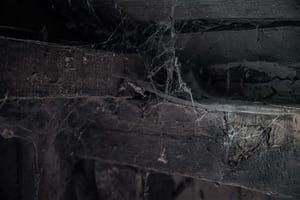How much mold in crawl space is acceptable?
We get the question a lot: “How much mold in crawl space is acceptable?” The only answer is one you feel comfortable with being responsible for the spread of the mold. If you are feeling like asking if mold is acceptable or how much mold in crawl space is acceptable, you may be already have a problem! Mold in your home can cause numerous health issues, and indifference seems to be a common symptom when the costs of removal are higher than a home owner expects.
Are You Neglecting Other Areas in Your Home?
How often do you ask the question “how much mold in crawl space is acceptable?” and are you neglecting other areas in your home? If I told you that mold can eat away at your home’s property value, would you ask “How much mold in crawl space is acceptable for the new home buyer?” This question now seems ridiculous as we understand that mold in crawlspace can deteriorate the value. Why would someone want to buy a home with mold? Many real estate agents will agree that simply mold being mentioned will lead a home buyer out the door. So why when you ask about your own home do so many ask how much mold in crawl space is acceptable instead of asking what risks are associated with mold and how to remove the threat.
Call any Professional and Ask “How much mold in crawl space is acceptable?”
Calling a professional to see the mold spore may be the only way to determine how much mold in crawl space is acceptable for your home and current situation. However, if you have already called a professional out to your home, wouldn’t you want to remove the risk? We offer FREE attic and crawl space inspections, so you can ask our technicians how much mold in crawl space is acceptable after the job as we guarantee our work! We will remove attic and crawl space mold so you can get rid of the worry about how much mold in crawl space is acceptable and move on to telling all your friends how Attic Health made your home a more healthy and confidently comfortable!
The Dangers of Mold in Crawl Spaces
Crawl space mold is often underestimated and mistakenly perceived as a minor concern due to its hidden nature and lack of human activity. However, neglecting mold growth in the crawl space can have serious consequences, especially considering everything is above the crawl space. Mold releases microscopic spores that can be toxic and infiltrate your living area, posing health risks for your family breathing it all in. Inhaling these spores can result in various health challenges, including anxiety, depression, asthma, breathing problems, bronchitis, cognitive issues, coughing, wheezing, chronic fatigue, joint pain, migraines, recurring sinusitis, red and itchy eyes, skin rashes, and a stuffy nose.
Furthermore, individuals with weakened immune systems may experience exacerbated symptoms, something we do not want in post Covid-19 era. Given these potential health hazards, prioritizing crawl space mold prevention should be a crucial aspect of your home maintenance checklist. You should always be asking how much mold in crawl space is acceptable in your head and answering “None!” with actions to keep it out of your home, attic and crawl space. This move while a bit uncomfortable, you are out in front of mold problems and will be in a proactive position to retain your home’s value and remove future costly damages.
What Causes Mold in The Crawl Space?
Excessive moisture anywhere in your home can originate from various sources. Naturally, moisture can emanate from the soil and dirt beneath your home, thus the crawl space getting this moisture. Additionally, factors such as leaky pipes or condensation issues can contribute to elevated moisture levels in tight spaces. In the absence of adequate ventilation, this accumulated moisture can foster the growth of mold and other undesirable microorganisms. To maintain a healthy indoor environment, it is crucial to address these moisture sources and ensure proper ventilation throughout your home.
With summer in full swing, the soaring temperatures require your HVAC system to be in optimal condition. However, if your attic or crawl space is plagued with excess moisture or humidity, it can impede the efficiency of your system. Beyond the strain on HVAC, excessive moisture or humidity in the crawl space can lead to a host of problems, including mold growth, water damage, and health risks for you and your family.
But how can you determine if your crawl space has excessive moisture?
What Causes Attic Moisture? Attic moisture can stem from various factors. One common cause is condensation, which occurs when warm, moist air from the main living area of your home rises into the attic. When this warm air meets the cooler underside of the roof’s deck, moisture forms. In colder climates, this condensation may turn into frost during winter, which is relatively harmless. However, when the frost melts, it can saturate the attic insulation, leaving it vulnerable to damage.
Additionally, other factors can contribute to dampness in the attic, including poor insulation, inadequate attic ventilation, improper bathroom ventilation, improper dryer ventilation, and hairline fractures in water pipes.
Telltale Signs of Moisture:
- Damp, musky odor
- Wet insulation
- Watermarks on walls or floors
- Moisture accumulation on windows
- Presence of mold
- Rust development
By recognizing these signs, you can take prompt action to address attic or crawl space moisture and safeguard your home from potential damage and health concerns.
Ways to Prevent Mold Growth in Your Crawl Space
Here are some valuable tips to prevent crawl space mold and maintain a healthy environment:
- Foundation Walls Inspection: Thoroughly examine your crawl space’s foundation walls for cracks, leaks, or any openings that could allow moisture to seep in. Even the tiniest gap can lead to unwanted moisture infiltration.
- Maintain Proper Gutter and Downspout Function: Ensure your gutters and downspouts effectively direct rainwater away from your home. Proper water flow should be directed at least six feet away from the foundation to prevent pooling and potential mold growth.
- Regularly Check for Leaks: Regular inspections of both your crawl space and above-ground plumbing are crucial. Look for any signs of leaks in pipes and plumbing fixtures. Water from leaks can easily find its way into the crawl space, causing moisture issues.
- Insulate Crawl Space Pipes: To prevent condensation on pipes and subsequent moisture buildup, consider insulating your crawl space pipes. This insulation helps regulate temperatures and reduces the risk of elevated moisture levels.
- Utilize a Vapor Barrier: Consider installing a vapor barrier in your crawl space. These special materials, typically made of plastic or foil, prevent moisture intrusion and condensation on surfaces. Ensure any existing vapor barriers are properly maintained or removed to avoid trapping moisture or odors between layers.
- Optimize Ventilation: Proper ventilation is essential for airing out the crawl space and maintaining dry conditions. Implementing effective ventilation methods can include diverting a small amount of heated air from your HVAC system, installing a dehumidifier to keep humidity levels below 30-50%, using exhaust fans to circulate air outside the crawl space, and ensuring your clothes dryer vent directs air outside rather than into the crawl space.
By following these preventive measures, you can significantly reduce the risk of crawl space mold and maintain a dry, healthy environment in your home you will never ask “how much mold in crawl space is acceptable?” ever again! Call us today (858) 289-6966


